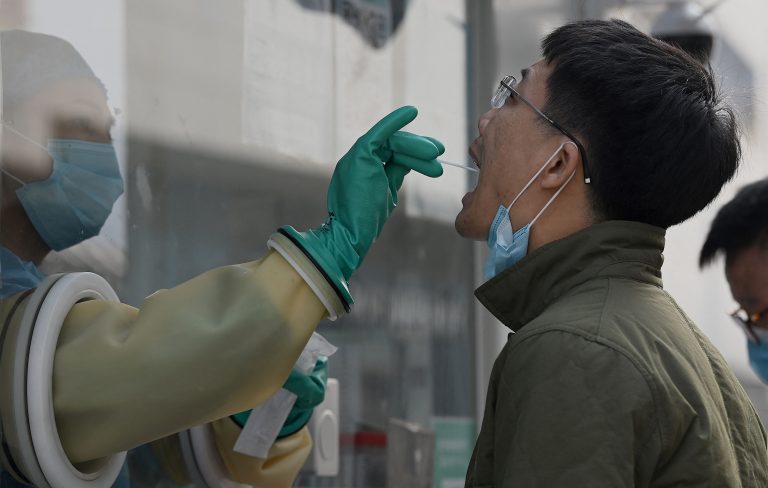China is ramping up safety measures in an effort to stick to its Zero-COVID strategy while new COVID-19 cases and the number of associated tests keep rising.
Authorities reported 38 new “domestically transmitted” cases on Friday in northern China while another 12 infections were registered and understood to be of foreign origin.
Most of the cases happened in the northern and north-western regions of Inner Mongolia and in Gansu province. The number was the highest recorded since September 20, when 42 new cases were reported in Fujian Province in the southeast.
A sudden panic broke out on Saturday when an elderly couple was identified as the spreader of a new batch of infections, also in the north of the country, that led to a manhunt across multiple provinces and regions for the original host who caught the virus and spread it among the population.
Alarm levels in Inner Mongolia and Gansu went red hot, and any and all means were exhausted in an effort to ratchet up the tightest safety measures thinkable in an attempt to quell the latest outbreak.
Success
You are now signed up for our newsletter
Success
Check your email to complete sign up
Several regions including Inner Mongolia, Gansu, Beijing, Guizhou, and Ningxia have seen travel restrictions, partial lockdowns, and curbs on outdoor sports and social gatherings as well as a testing frenzy.
All residents and workers in the affected areas are subjected to mandatory testing. The Chinese National Health Committee (NHC) issued an urgent briefing to all domestic tourists visiting the regions during the Golden Week national holiday in early October to report themselves and get tested.
Meanwhile, the country is also tightening its border controls to stem the possible influx of virus strains from abroad. One of their methods includes closed-loop management of the workforce. Typically workers of different shifts are kept separated during the whole working process for the entire week and undergo at least one week in quarantine after that.
“If closed-loop management is not implemented for the foreign cargo aircraft service personnel, freight company porters, special vehicle drivers, tally clerks, and other relevant personnel in the airport freight, the infection will continue to spread,” a group of Chinese Centre for Disease Control and Prevention (CDC) researchers wrote this month.
Jin Dongyan, a professor at the University of Hong Kong’s medical faculty, told the outlet that after the outbreak in Nanjing this summer, “they have heightened many of these [requirements], with a high price for the workers. They have made it more and more stringent, and it remains to be seen whether this really works.”
Unlike many other southeast Asian countries, like Malaysia, Thailand, Singapore, and Vietnam, who have embraced a more pragmatic approach of “Living with the Virus” China still clings to its Zero-COVID creed.
“Given that China has the zero-Covid policy, any [weakness] could be an outbreak at the national level,” said Chen Xi, an associate professor at the Yale School of Public Health in the US.
“It makes the task more difficult. You will have smaller airports and transport hubs that have less experience dealing with the virus,” Chen added.
But Kwok Kin-on, an assistant professor at the Chinese University of Hong Kong’s JC School of Public Health and Primary Care, said, “We can’t guarantee that the existing system is perfect, 100 percent stopping the import of cases,” he said. “Even 0.1 percent getting through is enough to result in an outbreak in the community.”
Anything is done to keep the number of infections at or below zero, such as implementing lockdowns, booster shots, quarantines, masks, and profusely testing.
But, with a higher number of tests performed, a higher number of positive outcomes will result. And with the waning efficacy rate of the vaccines, that do not live up to their expectations, this resolution may be a bridge too far.














